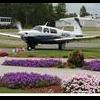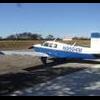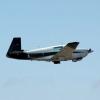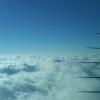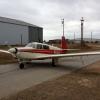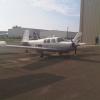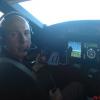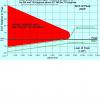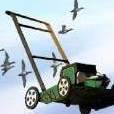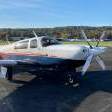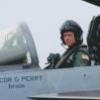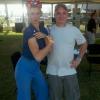Leaderboard
Popular Content
Showing content with the highest reputation on 07/20/2015 in all areas
-
The nice thing about something mechanical is that it tends to show up as faulty very quickly if improperly designed or installed. In my race car days, races were won and lost in the shop, as I imagine they still are. Airplane construction is really no different. The fast build completion centers that a lot of the kit makers are leaning towards provide a standardization of construction and I would think best practices to help insure the quality and thus safety of the human element. Some of the RV's I have seen rival the craftsmanship of Indy cars, only to find they have been built by guys who build indy cars They make some of the certified planes look like a rather poorly thought out example using technology of yesteryear. Proven technology? For the most part, but We have proven we can wear out a cam in a Lycoming engine for sure, and we can make junk out of a pair of magnetos in 500 or so hours, along with vacuum pumps and a host of other somewhat critical certified parts. Flap motors that cost 2K used, no back clutch springs if available costing well north of 1K, Mixture cable at $500, E model induction boot at $400, shock donuts at 130 ea., there is some real insanity to the certified world pricing. But I digress, the real weak link in the accident chain is still the system we are most reluctant to look at...ourselves. Us doing what we do best sometimes isn't good enough. We are a complex component of a flight system that has a lot of potential of needing service regularly.2 points
-
Business Jet Center at DAL is actually quite GA friendly. Used them many times in my Mooney and some random Cessnas. Even get faster departures from there than Addison. Fuel is cheaper than ADS as well. And the line service is fast. Request Takeoff/Landing from 13L/31R to avoid having to taxi past the airline terminal.2 points
-
Well, I realize there are a lot of questions about the speeds fighters use below and rules that apply. I flew F-16s for 28 yrs, so let me pass some info that may clear some answers. USAF fighters are not exempt from FARs whatsoever, there are some different rules though that allow fighters to operate faster than 250, they have to do with training and ability for the a/c to maneuver effectively. When a MOA is actively being used for training, the fighters are probably using tactical air speeds etc. Feel free to fly through a MOA anytime but be aware if it is active you are flying in high threat airspace. If you are IFR they won't push you through an active MOA unless the mil users agree to that. If you are VFR it's see and avoid against tactically painted a/c designed to absorb light and are difficult to see and avoid. When a VR route is active, same applies for VFR traffic, you could see fighter there low level 480kts plus etc. fighters do a good job at detecting traffic and avoiding it most of the time GA doesn't even know they were avoided etc. Not a perfect world, radars can miss targets so looking out the window is a big deal for fighters and GA. Fighters will not intercept GA on purpose, and many times what feels like a dust off is a result of a short range detect and avoid manuever. Remember these fighters are not out looking to mess with GA, they are there training doing something that has a purpose; like checking out a new wingman, flling a low level square or a myriad of other things that need to be completed etc. I know this doesn't make anyone feel better that the Cessna got run over, there are a lot of questions, why did the f-16 not detect the threat on his radar etc. Well who knows, where was the pilot looking? his radar may not have been looking in the right place, his el strobe pointing wrong direction etc, we will find out after the investigation. For that matter where were the Cessna pilots looking? Etc Having been around many midairs in my career, let me assure you they all have a a common thread, (clearing your flight path). As a GA pilot, always be aware of the airspace you are flying through, in many cases in my fighter cockpit we had to stop large axcercises for the little guy chugging at 120kts right through the middle of a 4 v 4 fight in a MOA. Big sky theory works most of the time but we can help ourselves by knowing when we (GA) are operating in a higher threat environment. Driving through MOAs that are active, vfr w no flight following is probably one of the most dangerous things GA pilots do. Hope this helps some of the questions...2 points
-
Interesting example of over engineering a solution. The older birds have a knurled ring around the green and red lenses that opens and closes an iris. You can set the desired dimness of each at any time.2 points
-
Old as this thread is, it was new to me, as well as educational and vicariously traumatic. That rut looks inconsequential. I will worship the yellow line going forward. My ill-maintained FBO ramp is full of ruts that I never gave much thought to previously - some not far from the yellow line...2 points
-
<<<Someday you may be invited to fly in the back-seat of one of our country's most powerful fighter jets. Many of you already have. John Elway, John Stockton, Tiger Woods to name a few. If you get this opportunity, let me urge you, with the greatest sincerity... Move to Guam . Change your name. Fake your own death! Whatever you do. Do Not Go!!! I know. The U.S. Navy invited me to try it. I was thrilled. I was pumped. I was toast! I should have known when they told me my pilot would be Chip (Biff) King of Fighter Squadron 213 at Naval Air Station Oceana in Virginia Beach . Whatever you're thinking a Top Gun named Chip (Biff) King looks like, triple it. He's about six-foot, tan, ice-blue eyes, wavy surfer hair, finger-crippling handshake -- the kind of man who wrestles dyspeptic alligators in his leisure time. If you see this man, run the other way, Fast. Biff King was born to fly. His father, Jack King, was for years the voice of NASA missions. ('T-minus 15 seconds and counting .' Remember?) Chip would charge neighborhood kids a quarter each to hear his dad. Jack would wake up from naps surrounded by nine-year-olds waiting for him to say, 'We have liftoff'. Biff was to fly me in an F- 14D Tomcat, a ridiculously powerful $60 million weapon with nearly as much thrust as weight, not unlike Colin Montgomerie. I was worried about getting airsick, so the night before the flight I asked Biff if there was something I should eat the next morning. 'Bananas,' he said. 'For the potassium?' I asked. 'No,' Biff said, 'because they taste about the same coming up as they do going down.' The next morning, out on the tarmac, I had on my flight suit with my name sewn over the left breast. (No call sign -- like Crash or Sticky or Leadfoot. But, still, very cool.) I carried my helmet in the crook of my arm, as Biff had instructed. If ever in my life I had a chance to nail Nicole Kidman, this was it. A fighter pilot named Psycho gave me a safety briefing and then fastened me into my ejection seat, which, when employed, would 'egress' me out of the plane at such a velocity that I would be immediately knocked unconscious. Just as I was thinking about aborting the flight, the canopy closed over me, and Biff gave the ground crew a thumbs-up. In minutes we were firing nose up at 600 mph. We leveled out and then canopy-rolled over another F-14.. Those 20 minutes were the rush of my life. Unfortunately, the ride lasted 80.. It was like being on the roller coaster at Six Flags Over Hell. Only without rails. We did barrel rolls, snap rolls, loops, yanks and banks. We dived, rose and dived again, sometimes with a vertical velocity of 10,000 feet per minute. We chased another F-14, and it chased us. We broke the speed of sound. Sea was sky and sky was sea. Flying at 200 feet we did 90-degree turns at 550 mph, creating a G force of 6.5, which is to say I felt as if 6.5 times my body weight was smashing against me, thereby approximating life as Colin Montgomerie. And I egressed the bananas. And I egressed the pizza from the night before. And the lunch before that. I egressed a box of Milk Duds from the sixth grade. I made Linda Blair look polite. Because of the G's, I was egressing stuff that I never thought would be egressed. I went through not one airsick bag, but two. Biff said I passed out. Twice. I was coated in sweat. At one point, as we were coming in upside down in a banked curve on a mock bombing target and the G's were flattening me like a tortilla and I was in and out of consciousness, I realized I was the first person in history to throw down. I used to know 'cool'. Cool was Elway throwing a touchdown pass, or Norman making a five-iron bite. But now I really know 'cool'. Cool is guys like Biff, men with cast-iron stomachs and freon nerves. I wouldn't go up there again for Derek Jeter's black book, but I'm glad Biff does every day, and for less a year than a rookie reliever makes in a home stand. A week later, when the spins finally stopped, Biff called. He said he and the fighters had the perfect call sign for me. Said he'd send it on a patch for my flight suit. What is it?? I asked. 'Two Bags.'>>>2 points
-
An hour out, an hour back. Two hours' flight at 9 gph is 18 gals. Last fuel I bought was $4.02, costing $72.36 in gas and maybe $1.50-$2.00 in oil. That leaves > $25 for food, easy to do for burger or barbecue, since I can only drink tea if I'm flying home. This flight carries no incremental costs for insurance, hangar, Garmin updates, etc., as they would be paid whether I fly to lunch or not. So yes, the $100 burger does still exist here in Alabama. YMMV. It works for me!1 point
-
Glasair has a "2 weeks to taxi program" for the Sportsman. Lancair has a 2 week factory program for the Evolution. Then you ship it to a proffessional builder and complete the work for your 51%. The builders have a program worked out with the FAA.1 point
-
Wow, after a little gentle persuasion, the insurance company indicated they would pay the full amount to paint the airplane at the high-quality local shop. I had touched base with a AOPA on Thursday where I purchased he insurance from the carrier which is named QBE, and they said they were going to talk to the claims manager but I do not know if they did or not. I also maintained a very friendly absolutely dead honest, even when I thought that might not be to my advantage, and reasonable dialogue with the adjuster, and I think that helped some. On Friday I asked that they either pay me to paint the airplane both top and bottom or total it, and I guess they figured it was cheaper to pay me. Financially I still don't know if this is good or bad news, but I know that I don't have to go try to find a different airplane, with all the attendant cans of worms that can be contained there in. At least I'm not going to have to take an obvious hicky and I'll have that shiny new paint to help swallow the bitter pill of, as they say in the ads " light damage history" Thanks to all who took the time to hear my tail of woe and respond, greatly appreciated Gary1 point
-
http://www.ntsb.gov/_layouts/ntsb.aviation/brief.aspx?ev_id=20150707X22207&key=21 point
-
1 point
-
It was FT at 9500', about 30 deg LOP, you'll notice I leaned twice, the 2nd time was an hour into the flight, as I was leaning after leveling off ATC called and asked about my routing and interrupted me and I forgot to go back and finish Despite running LOP, I did a in flight mag check just last week and this is what I saw: I have about 115 hrs on the plugs since annual, had to have them cleaned and regapped (notice the EGT drop on #3), I don't see it on runup, Busch is right, in flight mag checks is a better stress of your ignition system.1 point
-
Sorry to hear it sounds like the pump. Previously, repair was an option. A place called George's Electric in Sacramento, CA could do repairs of the Dukes pumps, and mine a few years back had an issue with the motor-side only which ended up being a couple hundred dollar fix. I had heard recently they are no longer in business or not doing the pumps but it may be worth checking anyway. If repair is not an option, a new Weldon replacement may be the best bet... but unfortunately not a cheap one.1 point
-
Yeah the shop by the Jet Center, where I hangar my plane has been closed for years. I assume it's inevitable a mechanic will take up residence there again at some point. It's too big a field to lack maintenance. Brian just helped me out on Friday in Quakertown with a broken carb heat cable.1 point
-
What the heck is that things? A Fiat Diesel engine?! Or alternatively an Audi Diesel engine. This thing can't be for real. But attractive. 3600nm range at 230GS "long range cruise" speed. That's coast to coast easy. Pressurized FL25, 62'' wide cabin, BRS. Vaporware if I ever saw one. I will look for the 1/4 scale model tomorrow.1 point
-
It's not uncommon for folks to get hung up on EGT numbers, unfortunately its the wrong way to look at leaning. I'm curious to know who told you not to run over 1400? There is nothing in your POH nor is there any physical or scientific reason to follow that advice. Use the search function and read up. There is plenty of info available on leaning I'll tell you this to get you thinking the right way. EGT raw numbers don't really matter when leaning in cruise; how far apart they peak is what matters. Example: Let's say you lean through peak at 5000ft on all cylinders and this is what you get: Cyl#1 peaks at 1356 @10.3gph Cyl#2 peaks at 1430 @10.2gph Cyl#3 peaks at 1447 @10.2gph Cyl#4 peaks at 1462 @10.1gph The EGT numbers are separated by 106 degrees (which means nada), but they peak withing .2 GPM of one another (this is important). That's a well conforming engine. Each cylinder is producing close to the same amount of power as the engine is leaned through the spectrum of useable fuel air ratios.1 point
-
1 point
-
The first time this happened to me I was like "wth!" but very quickly realized that the indicator in the floor tells the tale. No switches or anything the indicator tells mechanically what is going on with the gear, I now look there first, when doing the gumps cause the fuel selector is right there next to it. Gas, check the selector, undercarriage, look at the floor indicator which is right by the fuel selector, then mixture,check, prop, full forward......easy peasy.1 point
-
Dear Two-Bags - I mean Fantom. POST OF THE YEAR! Not even close - no other post comes even close. You are hereby the funniest man with a Mooney in the world. How did you end up getting this ride? How did you get this invite? I hear you and I officially stick my fingers in my ears - I'd ride with Biff, or (up)Chuck or whatever Military Aviator will take me in whatever Fxx they have the keys too. Take me along too!1 point
-
Thanks everyone for the help! I took the left cowl off as suggested and located the fuel pump. I found I was getting voltage to the pump. I also noticed the pump was getting hot while left on. Sounds like I need a new pump, right?1 point
-
No doubt the M20J/201 is a great airplane, possibly the best all-around airplane that Mooney ever designed and built. But that isn't necessarily enough. The P51 Mustang was a great airplane, but I'm not anticipating North American restarting the production line.1 point
-
Try turning other stuff in the plane off such as other radios, transponder, alternator, possibility even one mag at a time. Its most likely either a loose connection on the gps which the avionics shop seems to have done a good job on or outside interference.1 point
-
I will also say that if it is acting up, rather than just using contact cleaner and calling it ops check good, go ahead and replace. I have seen several of these ancient switches fail in strange ways, including getting very hot heating while otherwise functioning normally... the whole idea of these is to also funciton as a circuit breaker. Will they if the pump shorts???1 point
-
Meh. during instrument training my CFI had me flying all over the place under the hood with the stall horn blaring away. Climbs, descents, turns, all just above stall. It's not that bad. 90 is what I flew all my approaches at, that's a piece of cake.1 point
-
Use electronic cleaner on it, that way you only have to cycle it a few times.1 point
-
The runway was awesome. The pucker factor clearing those trees at the end on a 90+ day wasn't [emoji15] Sent from my iPad using Tapatalk1 point
-
I absolutely agreed that a check of the switch is needed but they are a little bit more than $25......It must have been a while since you bought one.1 point
-
1 point
-
Man, don't you just hate it when one of starts acting like an adult?! [emoji12] The funny thing is that I have met Peter Garmin in person a few times. He actually is very open and nice and willing to share his knowledge... (Just don't start talking about Garmin, CamGuard, where to buy an airplane, the weather). [emoji16] And just for the record Peter, after next week I will officially have more Garmin stuff in my plane than you do! Sent from my iPad using Tapatalk1 point
-
I modify my checklists everytime I add something new that has a checklist item. I ended up buying one of these lamination machines. You can buy lamination paper in different sizes. I create the checklist in Word and then laminate them. With my recent radio issues, I made a NORDO card from the "Say it Right" site. Here is what it looks like laminated. The machine is made by Purple Cows (not affiliated with any of my women). Sent from my iPad using Tapatalk1 point
-
I don't know, but why do I think a trip to the emergency room would be in my future if I tried to ride that?1 point
-
I used to own a pair of segways - this looks like it would do the same thing and weigh a lot less.1 point
-
Well,,, they made it! Been listening to the so tower and watching the so. webcam.They finally called in at 11:15, started landing 7 mins later, got to see some, but the cam keeps panning, so I switched to the no. cam to see some of the taxiing to the no. 40, but the cam keeps panning,,, but They Are There,,,, let the fun begin!!!1 point
-
I think there is a world inside general aviation that operates engines like the one we're talking about all the time. I believe there are a lot of older IA's that would not have a problem flying behind this engine. Since over the years they have witnessed several examples of similar engines performing just fine. But I think there may be a safety stigma behind defending an engine like this. When It's been 42 years since overhaul, it has to be bad, is the consensus on this board. Correct me if I'm wrong. My point being that this engine keeps getting signed off by somebody! And it keeps putting along. Granted it could start making metal tomorrow. But so could anyone's engine. I guess what we're saying is, is that this one is more likely to make metal sooner. The big question is, is that founded in facts? Or just legends. Bob1 point
-
1 point
-
I bought brand new from here and there are plenty of threads on the subject: http://www.cjaviation.com Very happy.........1 point
-
Welcome aboard, CanopyMan... Get out the voltmeter. You may know where the FP is from the outside, by the convenient pump drain that pokes through the sheet metal. That's the drain for leaky pump seals... (This may not apply to Es, my experience comes from M20Rs) Best regards, -a-1 point
-
So just to be sure if it is a Duke pump and it goes south, they will throw lots of plastic downstream. There should be a filter right after the pump to catch it if the AD was done There should be a screen right in the Fuel servo. You have probably been flying it with the pump failed for awhile.1 point
-
Thanks for the advice, Gary, but... We are collectively similar to moths drawn to the flame. Call me Crispy, but I'd go tomorrow. Best regards, -a-1 point
-
This accident in Plainville, MA feels very close to me. For nine-and-a-half years I commuted almost every business day from Martha's Vineyard to Norwood, MA (OWD) which was the pilot's destination. I have just over 300 instrument approaches into OWD and every one of them was the LOC RWY 35 approach. Given the fact that the wind was reported as 010 I feel sure that was what the pilot intended. The address of the accident was 25 Bridle Path Plainville, so I tried to determine what road ATC was vectoring the pilot to. I think Rt. 1 might have been to the pilot's right and that road has buildings and businesses on both sides of the road and would not be the best place to head for. In my opinion, ATC often directs the pilot to an airport far too distant or to a road that on average would be too far away or just a bad choice. When the pilot says, "I need help" and ATC doesn't have any knowledge of how far the plane can glide into the wind, or what the pilot can expect when reaching the destination he is being vectored to, the natural instinct to begin maneuvering where ATC has advised is very strong. Sometimes, in stormy conditions ATC will tell the pilot something like, "turn right 090" and when the pilot looks to his right there's a black cloud with lightening coming out of it. Yet sometimes the pilot feeling deep stress will simply respond "right 090" instead of responding "unable". Having never been in such a stressful situation before with the pilot's family on board, I can't find any personal fault with the pilot or his decisions, but I think that pilots need to remember that ATC advice will only help when the advice is disseminated by the pilot as helpful or not. Plainville is not a very densely populated town. It's not near Boston or Providence. It's more like half-way between. The address of the accident was just about 1,500 ft. away from the Walnut Hill Horse Farm. There are corn fields and shallow ponds and lakes in Plainville and of course a golf course too. I think it's a shame that ATC first tried to advise the pilot to turn toward a busy road with buildings all along side it that was too far away anyway. I don't mean to disrespect the pilot or anyone else associated with this accident, including you. But I think that if pilots think ahead about the unthinkable, they can increase their chances for survival. I think this type of discussion and the possibility that it might save someone's life is what Monneyspace is all about.1 point
-
Mine invariably settles at 6 quarts and stays there for a while. So I add a quart when it gets down to 5.5, or if it has been at 6 for a while and I'm leaving on a long flight. Robert1 point
-
These old planes aren't getting any more abundant. Every year some crash or rot away. Good airframes like you seem to have aren't getting any easier to find. If I were you, I would just accept that it's not perfect situation. Crap happens to all of us. If you try to trade this problem away, then you will likely be getting many more problems that will be surprises later. It seems that you know your plane well and have it setup how you like it. For most of us, that takes years and a lot more money. Just be patient and find some good used control surfaces and just fly it meanwhile. Get what you can from the insurance company, then cut them loose. Seems like your broker isn't helping you, which is what they are paid to soon my opinion. Life is too short... Don't give up the plane you love because she got a few bruises. It sounds like even with the bruises, you still have a very fine plane and people would be lining up to buy it.1 point
-
I'm just amazed the picture was posted right side up. If anyone should be having problems posting pictures right side up, it should be the guy from down under, not you guys! Sent from my iPad using Tapatalk1 point
-
AOPA and the Air Safety Institute are following developments closely. As the NTSB works through the investigative process, If there are lessons learned that can prevent this sort of accident from happening again, we will do everything in our power to help pass that information along to the pilot community. http://www.aopa.org/News-and-Video/All-News/2015/July/08/Tragedy-over-South-Carolina1 point
-
The take off and slip restrictions on the Bonanza have to do with unporting the fuel system , If you have ever been close up to a V tail it is HUGE , I don't even know if it is possible to shadow it enough to stall it.... Also the Mooneys have a very narrow airfoil on the tails , which may contribute to the possibility of stalling the tail in a slip.......Just an observation , no real engineering data to back it up....1 point








